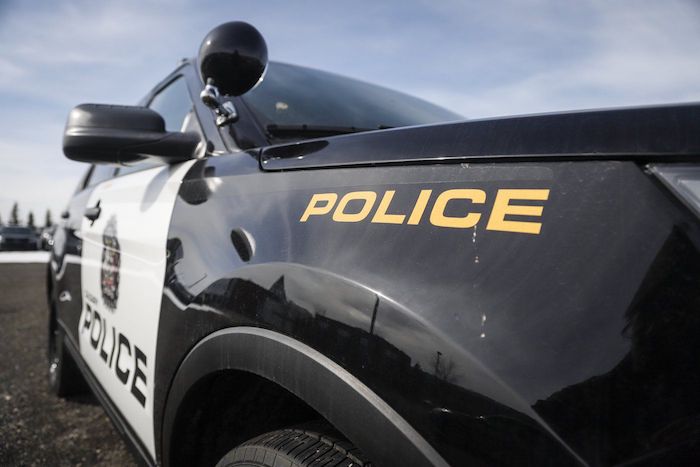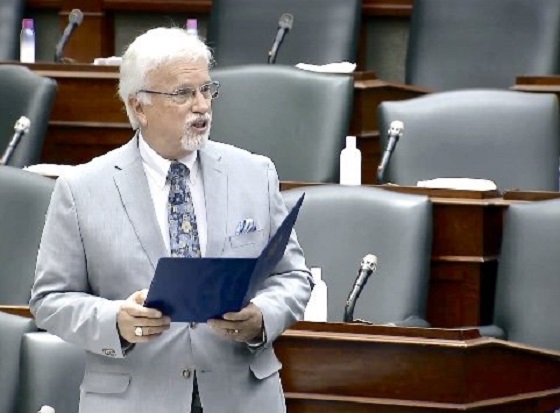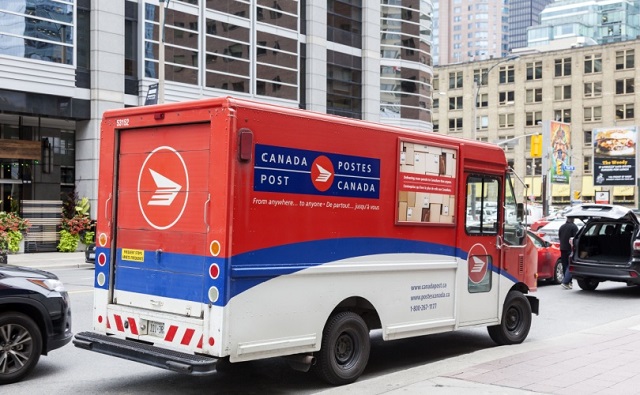Alberta
Province providing Indigenous communities and municipalities support to study future of policing

Committing to community policing
Alberta’s government will ensure Indigenous communities and municipalities have the support they need to study what kind of police service best meets their local needs.
Every Albertan should feel safe and secure in their communities and every community should be able to choose a policing model that meets their needs. Alberta’s government is investing in increased community safety by providing $6 million over two years for Indigenous and Municipal Police Transition Study Grants. These grants would provide Indigenous communities and municipalities with up to $30,000 each toward an independent study to determine if a local, self-administered police service or a regional policing model would be a better fit for their citizens.
“No one knows a community’s needs better than the people who live there. This funding will empower municipalities to explore different policing models that will improve public safety and address their community’s unique needs.”
The Indigenous and Municipal Police Transition Study Grants were created to assist communities interested in exploring different policing models. The grants will help communities cover the cost of conducting necessary research into local public safety needs, gaps, capital requirements and transition considerations.
To date, Public Safety and Emergency Services has received grant applications from 13 communities that are interested in a different policing model to meet their needs. The department is reviewing these applications and working with these and other communities that have expressed interest in applying.
“This funding provides municipalities with an excellent opportunity to study how best to meet their communities’ local and regional policing needs.”
Alberta’s government supports a community’s choice to determine what is best for its citizens, and assisting with the study and development of alternate policing models will help address the government’s public safety concerns. Every community has distinct needs, and each is in the best position to determine which policing model is best for them.
Budget 2023 secures Alberta’s future by transforming the health-care system to meet people’s needs, supporting Albertans with the high cost of living, keeping our communities safe and driving the economy with more jobs, quality education and continued diversification.
Quick facts
- Under Alberta’s Police Act, towns and cities with populations greater than 5,000 are responsible for their own policing.
- The Police Act gives municipalities the option of having their own police service, forming a regional policing arrangement or contracting for provincial policing services (i.e., the RCMP under Alberta’s provincial police service agreement).
- Under an agreement reached in September 2022, the Siksika Nation will get its own self-administered police service. Siksika developed a business case in 2021 with assistance from a $30,000 provincial government grant.
- Grande Prairie city council voted in March to create a municipal police service that will take over local policing from the RCMP.
- Over the next two years, Alberta will provide Grande Prairie with a $9.7-million grant to establish a local police service.
Alberta
Alberta’s vision for passenger rail

Alberta’s government will develop a Passenger Rail Master Plan as the foundation to advancing passenger rail in the province.
Since the early days of Alberta’s development, the province has been shaped by the iron rails that crisscross its landscape. The arrival of the transcontinental railway in the late 19th century brought about profound changes to the way of life, facilitating trade, settlement, and economic prosperity. Towns and cities sprung up along the tracks, serving as vital hubs for commerce and transportation.
Today, the legacy of rail continues to shape Alberta and the rest of Canada. While the modes of transportation may have evolved, the spirit of innovation and connectivity remains as strong as ever. As Alberta experiences record population growth and evolving transportation needs, advancing passenger rail infrastructure is essential for enhancing accessibility, efficiency, and connectivity across the province.
Alberta’s Passenger Rail Master Plan will look forward decades and identify concrete actions that can be taken now as well as in the future to build the optimal passenger rail system for the province. The Master Plan will assess the feasibility of passenger rail in the province, including regional (inter-city), commuter and high-speed services.
“A large and efficient passenger rail network stretching across the province has incredible potential. It represents a forward-looking vision and is a mobility solution for our rapidly growing province and I’m excited to watch this plan take shape and bring us into the future. There’s a lot of work ahead of us, but I’m confident that we will build the network Albertans need to improve daily life and work, boost the economy and take away the stress of long-distance travel.”
“Alberta already has significant public mass transit systems in Calgary and Edmonton for the provincial passenger rail system to build upon. The Master Plan will be a vital tool to guide the province on the next steps in advancing passenger rail. It will provide certainty to the rail sector and ensure the most effective use of tax dollars and government authorities. We look forward to hearing from Albertans and working with municipalities, Indigenous communities and the private sector in advancing passenger rail in the province.”
Passenger rail services connected to urban mass transit shapes and strengthens regional transportation systems, connects communities, supports jobs and the economy and improves access to housing.
“Canada’s railways appreciate the Alberta government’s efforts to conduct a fact-based study on the potential for passenger rail service that recognizes the essential need to protect current and future freight rail capacity. Any proposal to co-locate passenger service in freight corridors must demonstrate the ability to preserve the freight rail capacity required to move goods in support of the province’s economy, today and tomorrow. Rail is the greenest mode of ground transportation for both people and goods.”
The government’s vision is for an Alberta passenger rail system that includes public, private or hybrid passenger rail, including:
- a commuter rail system for the Calgary area that connects surrounding communities and the Calgary International Airport to downtown;
- a commuter rail system for the Edmonton area that connects surrounding communities and the Edmonton International Airport to downtown;
- regional rail lines from Calgary and Edmonton to the Rocky Mountain parks;
- a regional rail line between Calgary and Edmonton, with a local transit hub in Red Deer;
- municipal-led LRT systems in Calgary and Edmonton that integrate with the provincial passenger rail system; and
- rail hubs serving the major cities that would provide linkages between a commuter rail system, regional rail routes and municipal-led mass transit systems.
The vision includes a province-led “Metrolinx-like” Crown corporation with a mandate to develop the infrastructure and oversee daily operations, fare collection/booking systems, system maintenance, and planning for future system expansion.
“At VIA Rail our vision for integrated mobility means dreaming of a future where a passenger can easily switch between commuter rail, light transit, transit buses, and regional trains in an agile and simple way. We’ve already initiated a number of exchanges with partners, and we intend to step up the pace in the coming months and years. I can assure you that as integrated mobility becomes an increasingly important topic of conversation in Alberta, VIA Rail will be there to play a unifying role.”
Alberta’s Passenger Rail Master Plan will ensure government has the required information to make decisions based on where passenger rail delivers the best return on investment. The plan will provide a cost-benefit analysis and define what is required by government, including a governance and delivery model, legislation, funding, and staging to implement passenger rail in Alberta. This work will include a 15-year delivery plan that will prioritize and sequence investments.
“We are excited to see the province taking the next step in committing to regional and intercity rail. This Passenger Rail Master Plan aims to set out a vision for a comprehensive rail network in our province that’s long overdue. We are thrilled to see this process move forward.”
The Master Plan will take into account future growth, planning for the growing provincial population and considering the use of hydrogen-powered trains to ensure a robust and effective passenger rail system to serve Albertans for years to come.
Development of the Master Plan will include engagement with Albertans to gain their perspectives for the future of passenger rail in Alberta.
Alberta’s government has released a Request for Expression of Interest to seek world-class knowledge and consultant services as a first step toward the development of the Passenger Rail Master Plan for Alberta. Following this process, a Request for Proposal will be issued to select a consultant to develop the Passenger Rail Master Plan. The Master Plan is expected to be completed by summer 2025.
Quick facts
- Passenger rail includes:
- Commuter rail – passenger rail that primarily operates within a metropolitan area, connecting commuters to a central city from adjacent suburbs or surrounding commuter towns, and is often traditional heavy-rail
- Regional rail – passenger rail that operates beyond the limits of urban areas and provides inter-city passenger rail transport services and can be traditional heavy-rail or high-speed rail
- Light-rail transit (LRT) – urban passenger rail transit that typically operates small, frequent train service in an urban area. Calgary and Edmonton use LRT as part of their mass transit systems
- Passenger rail in Alberta is currently limited to two tourism-focused services, VIA Rail and Rocky Mountaineer, and LRT in Calgary and Edmonton.
- Budget 2024 includes $9 million to support the development of the Passenger Rail Master Plan this year.
Alberta
Three Calgary massage parlours linked to human trafficking investigation

News release from the Alberta Law Enforcement Response Team (ALERT)
ALERT’s Human Trafficking unit has searched and closed three Calgary massage parlours. A year-long investigation has linked the businesses and its owner to suspected human trafficking.
ALERT arrested Hai (Anna) Yan Ye on April 16, 2024 and charged the 48-year-old with advertising sexual services, drug offences and firearms offences. The investigation remains ongoing and further charges are being contemplated.
Ye was linked to three commercial properties and two homes that were allegedly being used for illegal sexual activities and services. The massage parlours were closed following search warrant executions carried out by ALERT, the Calgary Police Service, and the RCMP:
- Seagull Massage at 1034 8 Avenue SW;
- 128 Massage at 1935 37 Street SW; and
- The One Massage Centre at 1919 31 Street SE.
- 1100-block of Hidden Valley Drive; and
- 3100-block of 12 Avenue SW.
As result of the search warrants, ALERT also seized:
- $15,000 in suspected proceeds of crime;
- Shotgun with ammunition; and
- Various amounts of drugs.
“We believe that these were immigrants being exploited into the sex trade. This has been a common trend that takes advantage of their unfamiliarity and vulnerability,” said Staff Sergeant Gord MacDonald, ALERT Human Trafficking.
Four suspected victims were identified and provided resources by ALERT’s Safety Network Coordinators.
ALERT’s investigation dates back to February 2023 when a tip was received about suspicious activity taking place at the since-closed Moonlight Massage. That location was closed during the investigation, in December 2023, when the landlord identified illegal suites on the premises.
The investigation involved the close cooperation with City of Calgary Emergency Management and Community Safety, Alberta’s Safer Communities and Neighbourhoods (SCAN) team, Canada Border Services Agency (CBSA), and the RCMP.
Ye was released from custody on a number of court-imposed conditions.
Anyone with information about this investigation, or any case involving suspected human trafficking offences, is asked to call Crime Stoppers at 1-800-222-TIPS (8477) or the Calgary Police Service non-emergency line at 403-266-1234.
ALERT was established and is funded by the Alberta Government and is a compilation of the province’s most sophisticated law enforcement resources committed to tackling serious and organized crime.
-

 Alberta1 day ago
Alberta1 day agoAlberta threatens to fight Trudeau government restrictions on Canada’s plastics industry
-

 Alberta2 days ago
Alberta2 days agoPrincipal at Calgary Elementary School charged with possession of child pornography
-

 COVID-191 day ago
COVID-191 day agoFormer Canadian lawmaker has no regrets about refusing COVID shot despite losing his job
-

 Alberta13 hours ago
Alberta13 hours agoAlberta’s vision for passenger rail
-

 COVID-191 day ago
COVID-191 day agoPeckford: Hallelujah! Supreme Court of Canada to hear Newfoundland and Labrador charter case
-

 Fraser Institute2 days ago
Fraser Institute2 days agoFederal government’s fiscal record—one for the history books
-

 Uncategorized14 hours ago
Uncategorized14 hours agoMaking Alberta a geothermal energy leader
-

 Alberta1 day ago
Alberta1 day agoCanada’s postal service refuses to help with Trudeau’s gun ban buyback program: report







